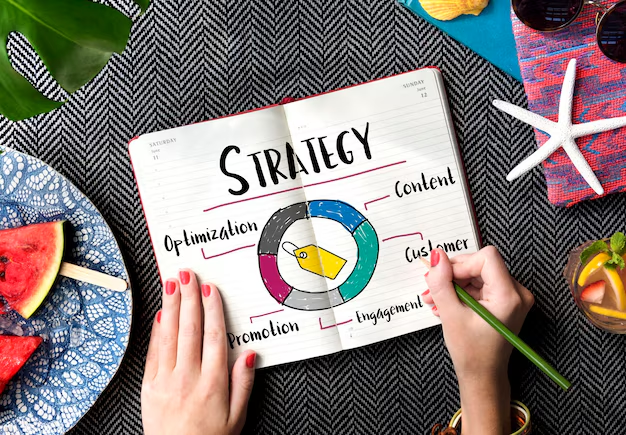Self Regulated Strategy Development: How To Learn Smarter
Have you ever felt like you’re just going through the motions of learning, but not truly mastering anything? You attend classes, read the materials, maybe even cram before exams, but somehow, the knowledge doesn’t quite stick, or you struggle to apply it effectively. It’s a frustrating feeling, isn’t it? Like you’re adrift in a sea of information without a clear compass or a sturdy ship to guide you. I get it. We’ve all been there. The good news is, there’s a powerful approach that can transform you from a passive recipient of information into an active architect of your own learning. It’s called Self Regulated Strategy Development, and it’s about to become your ultimate learning superpower.
Table of Contents
Imagine being in the driver’s seat of your education, confidently navigating the complexities of any subject, and achieving your learning goals with intention and skill. That’s the promise of Self Regulated Strategy Development (SRSD). This isn’t just another study technique; it’s a holistic framework that empowers you to understand how you learn best and provides you with the tools to take control of that process. Ready to unlock your full learning potential? Let’s dive in and explore how SRSD can revolutionize the way you learn and achieve academic success.
What Exactly is Self Regulated Strategy Development (SRSD)?

At its core, Self Regulated Strategy Development (SRSD) is an evidence-based instructional approach that teaches you how to become a self-directed and strategic learner. It’s not about simply memorizing facts or passively absorbing information. Instead, SRSD focuses on equipping you with a set of powerful strategies and skills that enable you to plan, monitor, evaluate, and adjust your learning process effectively. Think of it as learning how to learn – a skill that will benefit you not just in academics, but in every aspect of your life.
SRSD is grounded in the idea that effective learning is an active and constructive process. It recognizes that you are not just a blank slate waiting to be filled with knowledge. You are an active participant in your own learning journey, and with the right strategies, you can significantly enhance your ability to learn, understand, and apply new information.
Breaking Down the Key Components of SRSD
SRSD isn’t a single technique, but rather a framework built upon several interconnected components that work together to foster self-regulated learning. Let’s break down the most important elements:
- Goal Setting: Before you even begin to learn something, SRSD emphasizes the importance of setting clear, specific, and achievable goals. What do you want to accomplish? What does success look like for you in this learning task? Goal setting provides direction and purpose to your learning efforts.
- Self-Monitoring: This involves actively tracking your progress as you learn. Are you understanding the material? Are your strategies working? Self-monitoring helps you stay aware of your learning process and identify areas where you might need to adjust your approach.
- Self-Instruction: SRSD encourages you to use internal dialogue and self-talk to guide yourself through learning tasks. This might involve reminding yourself of strategies, asking yourself questions, or providing yourself with encouragement. It’s like having a supportive coach inside your own head!
- Self-Reinforcement: Recognizing and rewarding your efforts and successes is crucial for motivation and continued learning. Self-reinforcement can be as simple as acknowledging your progress, giving yourself a break, or celebrating milestones.
- Learning Strategies: SRSD explicitly teaches you a variety of effective learning strategies tailored to specific tasks or subjects. These strategies could include summarizing, outlining, using graphic organizers, mnemonics, or specific writing or problem-solving techniques.
- Adaptation and Reflection: Learning is not always linear. SRSD encourages you to reflect on your learning experiences, identify what’s working and what’s not, and adapt your strategies accordingly. This iterative process of reflection and adjustment is key to becoming a truly self-regulated learner.
Why is Self Regulated Strategy Development So Important for Your Learning?

You might be wondering, “Okay, this SRSD sounds interesting, but why should I invest my time in learning about it?” That’s a fair question! The truth is, developing self-regulated learning skills through SRSD can have a profound impact on your academic journey and beyond. Here’s why it’s so important:
Boosts Academic Performance and Achievement
Numerous studies have consistently shown that students who use self-regulated learning strategies tend to achieve higher academic outcomes. When you’re equipped with SRSD, you’re not just studying harder; you’re studying smarter. You become more efficient and effective in your learning, leading to better grades, deeper understanding, and greater mastery of the subject matter. It’s about working with your brain, not against it.
Enhances Motivation and Engagement
When you feel in control of your learning, your motivation naturally increases. SRSD helps you set meaningful goals, track your progress, and experience a sense of accomplishment as you see yourself improving. This sense of agency and progress fuels your intrinsic motivation, making learning more enjoyable and engaging. Instead of feeling like learning is something imposed on you, you start to see it as a personal journey of growth and discovery.
Develops Lifelong Learning Skills
The benefits of SRSD extend far beyond the classroom. The skills you develop through SRSD – goal setting, self-monitoring, problem-solving, and strategic thinking – are essential for success in any field and throughout your life. In today’s rapidly changing world, the ability to learn independently and adapt to new challenges is more crucial than ever. SRSD equips you with the tools to become a lifelong learner, constantly growing and evolving.
Promotes Deeper Understanding and Retention
SRSD encourages active learning and deeper processing of information. By actively engaging with the material, using strategies like summarizing, explaining to yourself, and connecting new information to what you already know, you move beyond surface-level memorization to genuine understanding. This deeper understanding leads to better retention and the ability to apply your knowledge in new and different contexts. You’re not just remembering facts; you’re building a robust and interconnected web of knowledge.
Self Regulated Strategy Development in Action: Practical Techniques You Can Use
Now that you understand the “what” and “why” of SRSD, let’s get into the “how.” SRSD is not just a theoretical concept; it’s a practical approach with concrete strategies you can start using today. Here are some powerful techniques you can incorporate into your learning process:
Effective Goal Setting: Your Learning Compass
Goal setting in SRSD is more than just saying “I want to get a good grade.” It’s about setting SMART goals:
- Specific: Clearly define what you want to achieve. Instead of “learn history,” try “understand the causes of World War I.”
- Measurable: How will you know when you’ve reached your goal? “Complete practice questions on WWI and get 80% correct.”
- Achievable: Set realistic goals that are challenging but attainable. Start with smaller, manageable goals and build up.
- Relevant: Ensure your goals align with your overall learning objectives and are meaningful to you.
- Time-bound: Set a deadline for achieving your goals. “Understand the causes of WWI by the end of the week.”
By setting SMART goals, you provide yourself with a clear roadmap and direction for your learning efforts.
Master Your Learning with Self-Monitoring Techniques
Self-monitoring is like checking your GPS as you drive. It helps you stay on course and make adjustments when needed. Here are some self-monitoring techniques:
- Track Your Progress: Use a study journal, planner, or app to log your study sessions, track topics covered, and note any challenges you encounter.
- Check for Understanding: Regularly ask yourself questions like, “Do I understand this concept?”, “Can I explain it in my own words?”, “What are the key takeaways?”
- Use Self-Quizzing: Test yourself frequently on the material you’re learning. This helps you identify gaps in your understanding and reinforces what you’ve learned.
- Seek Feedback: Don’t be afraid to ask for feedback from teachers, peers, or mentors. External perspectives can provide valuable insights into your learning.
Regular self-monitoring allows you to proactively identify and address any learning difficulties before they become major obstacles.
Self-Instruction: Your Inner Learning Coach
Self-instruction involves using internal dialogue to guide your learning. Think of it as becoming your own learning coach. Here are some examples of self-instructional prompts:
- Before starting a task: “Okay, what’s the first step? Let me review my plan.”
- During a task: “Am I on the right track? Let me reread the instructions.” “Remember to use the summarizing strategy.”
- When facing difficulties: “This is challenging, but I can break it down into smaller steps.” “Let me try a different approach.” “It’s okay to ask for help if I need it.”
- After completing a task: “What did I learn? What worked well? What could I do differently next time?”
By using self-instruction, you become more mindful and intentional in your learning process, guiding yourself towards success.
Self-Reinforcement: Celebrate Your Learning Wins

Learning can be challenging, so it’s important to acknowledge and reward your efforts and achievements. Self-reinforcement helps you stay motivated and build positive associations with learning. Examples of self-reinforcement include:
- Verbal Praise: Tell yourself, “Good job! I tackled that difficult problem.” “I’m making progress!”
- Small Rewards: Treat yourself to something you enjoy after a productive study session – a short break, a healthy snack, listening to your favorite music.
- Celebrate Milestones: Acknowledge and celebrate achieving larger learning goals, like finishing a chapter, completing a project, or acing an exam.
Self-reinforcement doesn’t have to be extravagant; it’s about recognizing your effort and progress, which boosts your confidence and motivation to continue learning.
Fuel Self Regulated Strategy Development with Self-Directed Learning Methods
To truly embrace SRSD, you need to cultivate self-directed learning methods. This means taking ownership of your learning and being proactive in seeking out resources and opportunities to learn. Here are some ways to fuel your self-directed learning:
- Identify Your Learning Style: Are you a visual, auditory, or kinesthetic learner? Tailor your learning strategies to your preferred learning style.
- Explore Different Resources: Don’t limit yourself to textbooks and lectures. Utilize online resources, videos, podcasts, articles, and libraries to expand your learning.
- Create a Personalized Learning Environment: Design a study space that minimizes distractions and promotes focus. Experiment with different study times and locations to find what works best for you.
- Seek Out Learning Opportunities: Actively look for opportunities to learn beyond the classroom – workshops, online courses, study groups, projects.
Self-directed learning empowers you to become an independent and proactive learner, constantly seeking knowledge and growth.
Learning Strategy Techniques: Boost Your SRSD Toolkit
SRSD is all about being strategic in your learning. Developing a toolkit of effective learning strategies is essential. Here are some powerful techniques to add to your arsenal:
- Summarizing: Condense information into your own words, highlighting the key points.
- Outlining: Organize information in a hierarchical structure to see the relationships between concepts.
- Graphic Organizers: Use visual tools like mind maps, concept maps, and flowcharts to represent information and connections.
- Mnemonics: Create memory aids like acronyms, rhymes, or visual imagery to help you remember information.
- Elaboration: Connect new information to what you already know, ask yourself “why” and “how” questions to deepen your understanding.
- Practice Testing: Regularly test yourself using practice questions, flashcards, or past papers to reinforce learning and identify areas for improvement.
- Spaced Repetition: Review material at increasing intervals to strengthen memory and retention over time.
Experiment with different learning strategies and find the ones that work best for you in different subjects and tasks. The more strategies you have in your toolkit, the more adaptable and effective you’ll become as a learner.
Table: Sample SRSD Strategies for Different Learning Stages
| Learning Stage | SRSD Strategy | Description |
|---|---|---|
| Planning | Goal Setting (SMART Goals) | Define specific, measurable, achievable, relevant, and time-bound learning objectives. |
| Planning | Task Analysis | Break down complex tasks into smaller, manageable steps. |
| Monitoring | Self-Questioning | Regularly ask yourself if you understand the material and if your strategies are working. |
| Monitoring | Progress Tracking | Keep a record of your study sessions and topics covered to monitor your progress. |
| Execution | Summarizing | Condense information into your own words to check for understanding and improve retention. |
| Execution | Elaboration | Connect new information to prior knowledge and ask “why” and “how” questions to deepen understanding. |
| Evaluation | Self-Reflection | Review your learning experience, identify what worked and what didn’t, and plan for future adjustments. |
| Evaluation | Performance Review | Assess your performance against your goals and identify areas for improvement. |
Implementing Self Regulated Strategy Development: Getting Started on Your Journey
Ready to start implementing SRSD in your own learning? Here’s a step-by-step guide to get you started:
- Understand the SRSD Framework: Familiarize yourself with the core components of SRSD – goal setting, self-monitoring, self-instruction, self-reinforcement, and learning strategies. Read articles, watch videos, and explore resources to gain a solid understanding.
- Start Small and Focus: Don’t try to implement all aspects of SRSD at once. Choose one or two strategies to begin with and focus on applying them consistently in a specific subject or task.
- Set Realistic Goals: Begin by setting small, achievable learning goals. As you become more comfortable with SRSD, you can gradually increase the complexity of your goals.
- Practice Self-Monitoring Regularly: Make self-monitoring a consistent part of your learning routine. Regularly check your progress, assess your understanding, and identify any challenges.
- Experiment with Different Strategies: Explore various learning strategies and techniques to discover what works best for you. Be willing to try new approaches and adapt your strategies as needed.
- Reflect on Your Learning Experiences: Take time to reflect on your learning process. What strategies were effective? What challenges did you face? What adjustments can you make for future learning tasks?
- Seek Support and Resources: Don’t hesitate to seek support from teachers, mentors, or peers. Explore online resources, workshops, and books on self-regulated learning and SRSD.
- Be Patient and Persistent: Developing self-regulated learning skills takes time and practice. Be patient with yourself, celebrate small victories, and keep practicing consistently.
Remember, SRSD is a journey, not a destination. The more you practice and refine your self-regulated learning skills, the more effective and empowered you will become as a learner.
Overcoming Common Challenges in Self Regulated Strategy Development
While SRSD is incredibly powerful, it’s important to acknowledge that you might encounter challenges as you implement it. Here are some common obstacles and tips for overcoming them:
Procrastination and Lack of Motivation
Challenge: It’s easy to fall into the trap of procrastination or lose motivation, especially when faced with challenging tasks.
Solution:
- Break down large tasks: Divide overwhelming tasks into smaller, more manageable steps.
- Set short-term goals: Focus on achieving smaller goals along the way to build momentum and a sense of accomplishment.
- Use time management techniques: Employ techniques like the Pomodoro Technique or time blocking to structure your study sessions and stay focused.
- Find your “why”: Connect your learning to your broader goals and values to enhance your intrinsic motivation.
- Reward yourself: Use self-reinforcement to acknowledge and celebrate your progress and effort.
Difficulty with Self-Monitoring
Challenge: It can be challenging to objectively monitor your own learning and identify areas for improvement.
Solution:
- Use specific monitoring tools: Employ study journals, checklists, or apps to track your progress and learning.
- Seek external feedback: Ask teachers, peers, or mentors for feedback on your work and learning strategies.
- Practice self-questioning: Develop the habit of regularly asking yourself questions about your understanding and learning process.
- Be honest with yourself: Be willing to acknowledge areas where you’re struggling and need to improve.
Choosing the Right Strategies
Challenge: With so many learning strategies available, it can be overwhelming to choose the most effective ones.
Solution:
- Experiment with different strategies: Try out various learning strategies and techniques to see what works best for you in different contexts.
- Consider the task and subject: Recognize that different strategies may be more effective for different types of tasks and subjects.
- Reflect on strategy effectiveness: Evaluate how well different strategies are working for you and adjust your approach accordingly.
- Seek guidance on strategy selection: Consult resources, teachers, or mentors for recommendations on effective strategies for specific learning challenges.
FAQ About Self Regulated Strategy Development
You probably still have some questions about Self Regulated Strategy Development. Let’s address some frequently asked questions:
What is Self Regulated Strategy Development and who can benefit from it?
Self Regulated Strategy Development (SRSD) is an instructional approach that teaches individuals how to become strategic and self-directed learners. It benefits anyone who wants to improve their learning skills, from students of all ages to professionals seeking to enhance their performance and lifelong learning capabilities.
Is Self Regulated Strategy Development only for struggling learners?
No, SRSD is beneficial for all learners, not just those who are struggling. While it can be particularly helpful for students who face academic challenges, SRSD can also empower high-achieving learners to further optimize their learning and reach their full potential. It’s about maximizing learning effectiveness for everyone.
How long does it take to see results from using Self Regulated Strategy Development?
The time it takes to see results varies depending on individual factors, the consistency of implementation, and the complexity of the learning tasks. However, with consistent effort and practice, you can start to notice improvements in your learning effectiveness, motivation, and academic performance within a few weeks to months. Remember, it’s a gradual process of skill development.
Where can I find more resources to learn about Self Regulated Strategy Development?
There are many valuable resources available to learn more about SRSD:
- Websites: Websites like the IRIS Center, What Works Clearinghouse (WWC), and SRSD Online offer information, research, and resources on SRSD.
- Books and Articles: Search for books and academic articles on self-regulated learning and Self Regulated Strategy Development in educational databases and libraries.
- Workshops and Courses: Look for workshops or online courses on SRSD offered by educational organizations or universities.
- Educational Professionals: Talk to teachers, school psychologists, or learning specialists who may have expertise in SRSD and can provide guidance.
Can I use Self Regulated Strategy Development for all subjects?
Yes, the principles of SRSD can be applied to learning in virtually any subject or domain. While specific learning strategies may need to be tailored to the subject matter, the core components of goal setting, self-monitoring, self-instruction, and self-reinforcement are universally applicable to enhance learning across disciplines.
Conclusion: Take Control of Your Learning with Self Regulated Strategy Development
Self Regulated Strategy Development is more than just a set of techniques; it’s a transformative approach that empowers you to become the architect of your own learning journey. By embracing the principles of SRSD – setting clear goals, monitoring your progress, guiding yourself with self-instruction, and celebrating your achievements – you can unlock your full learning potential and achieve academic success like never before.
Imagine the confidence you’ll gain as you master new skills, the satisfaction you’ll feel as you reach your learning goals, and the lifelong advantage you’ll have as a self-directed, strategic learner. SRSD is your key to unlocking a world of learning possibilities, not just in school, but in every aspect of your life.
So, are you ready to take control of your learning and embark on your SRSD journey? Start today by choosing one strategy that resonates with you and begin incorporating it into your study routine. Remember, every step you take towards becoming a self-regulated learner is a step towards a more successful and fulfilling future.
Now, we want to hear from you! What are your biggest learning challenges? Which SRSD strategies are you most excited to try? Share your thoughts and questions in the comments below – let’s learn and grow together! And if you found this article helpful, please share it with others who could benefit from mastering their learning journey!

